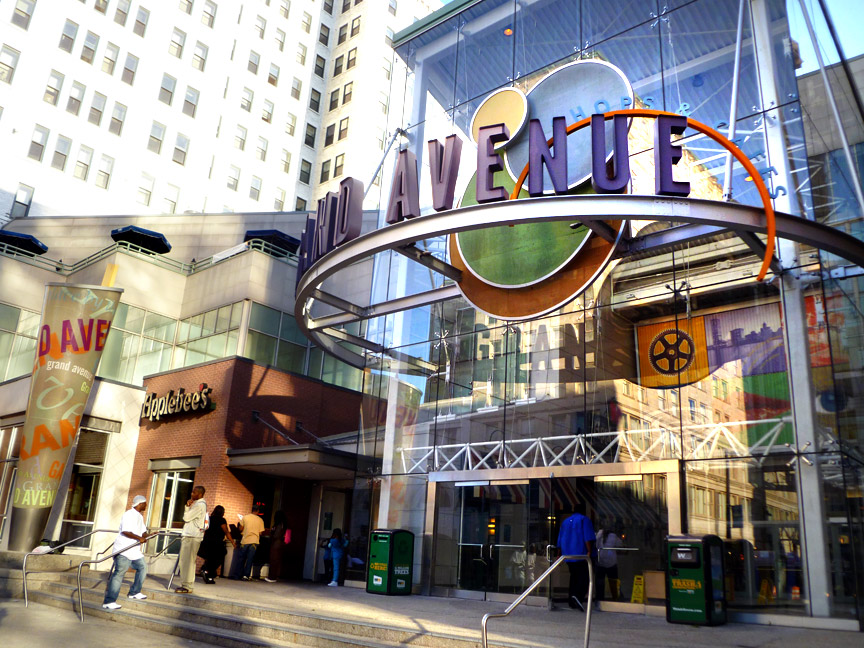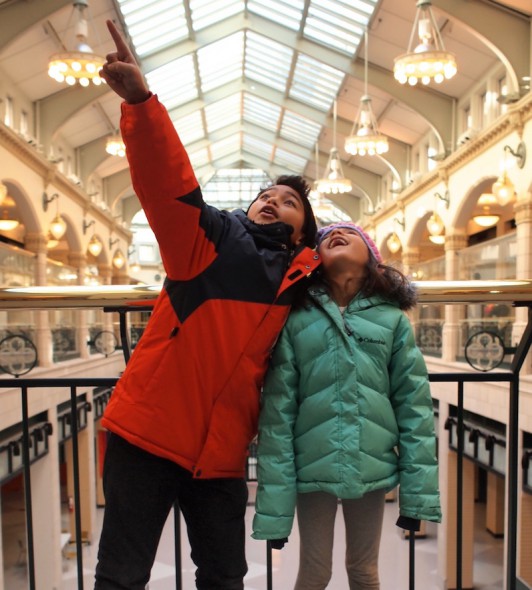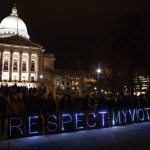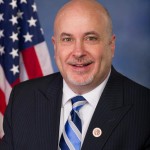13 Ways to Revive Grand Avenue
Experts offer ideas to transform downtown’s long-struggling mall
The news isn’t good for indoor shopping malls in America. Those one-time trend-setters—with inward-facing courtyards—have been faltering across the U.S. and Canada for two decades. PBS reported in 2014 that of 1,500 malls built since 1956, barely 1,000 still function as indoor malls; no new ones had been built since 2006.
If anything, downtown malls have done even worse. Milwaukee’s Grand Avenue Mall opened in 1982, bloomed for awhile, but began declining by the early 1990s. It was renamed The Shops of Grand Avenue but that didn’t help, nor did a series of out-of-town owners.
But as Urban Milwaukee has reported, the mall now has local ownership. Tony Janowiec, one of the co-owners, believes they’ve assembled a “dream team” to redevelop the mall.
Steve Chernof, president of WAM DC, LLC, a nonprofit that has been working to revive W. Wisconsin Ave., is excited about the new ownership: “We’ve told them we stand ready to assist them in their efforts. It’s great to have people with local ties who understand the dynamics of the area.”
Kendall Breunig, who owns three well-tenanted floors above the Plankinton Arcade section of the mall, says “Local owners will be more inclined to put improvements into things that could truly make a difference.”
But good ideas will also be needed. With that in mind, we solicited suggestions from a range of knowledgeable people who want to see the mall reinvigorated. Several were involved in research about how to revive West Wisconsin Avenue, which was coordinated by Creative Alliance Milwaukee(CAM). Here are their suggestions:
1. Change the vision
Says Ron San Felippo, chair of the Historic Third Ward BID: “Don’t get caught up on prior decisions or ideas. Be open to anything.” Jeremy Fojut, chief idea officer of Newaukee, which is based at Grand Avenue, says that rather than building the mall around retail, “the new vision has to be focused around lifestyle. It needs to include more creative and education-based enterprises” along with retail, he says.
Tim Syth, a business and community development consultant, suggests changing the financial incentives to change the vision: “The Grand Avenue is a huge space that needs a lot of activity to feel vibrant. Rent rates are dirt cheap to get tenants, so activation is now determined somewhat randomly based on rents. Why not flip that model on its head and offer incentives for the most compelling proposals and see what emerges? Maybe even sweeten the pot with activation dollars.”
2. Play up its central location
CAM’s executive director Maggie Jacobus: “Thousands of visitors come each year to the Wisconsin Center, hotels, the Riverside Theater and other attractions in the immediate area. Being in the heart of downtown offers a unique opportunity for the Grand Avenue to be ‘the crossroads of Milwaukee’ and the hub of activity for visitors, downtown workers and residents alike. The complex could be rebranded as a mixed-use attractionrather than as a mall.”
3. Cater to downtown populations
There were 6,348 new residential units built in Greater Downtown between 2004 and 2014 and nearly 800 more are under construction. “The most successful part of downtown right now is the residential component,” notes Bruenig. “A success story to mirror, but not copy, is the Milwaukee Public Market.” Says Chernof: “Entice vendors who will serve the needs of those new residents.”
Claude Krawczyk, president of the Downtown Neighbors Association: “As a downtown resident, it would be great to be able to buy a toaster or other household items without having to drive across town. Other cities have successful urban Targets.” Smaller-scaled Targets and Target Express stores have opened in big-city downtowns since 2012.
Beth Weirick, executive director of the Milwaukee Downtown BID, suggests a grocery “would work really well in that location.” Peddler Jim’s Produce has been a modest mainstay in the Plankinton Arcade and there’s no significant grocer in Westown. Says Breunig: “a small, upscale grocer would be good in the mix.”
4. Add more restaurants
Breunig: “The mall needs to become more of an entertainment use.” The fast-food court on the third floor is busy midday but he’d like to see upscale bars and restaurants mixed into the retail.
The mall now closes at 7 p.m. weekdays and earlier on weekends and more bars and more variety in restaurants could change that. As Bethany Sinay, owner of La Delicatesse, notes, “Our clientele is 98 percent people who work nearby or in the mall. Our business completely drops off on weekends.”
Fojut envisions the food court becoming “a restaurant incubator. Shared kitchen space for food trucks could double as small, scalable, brick-and-mortar shops during peak hours. As restaurants grow, they could upgrade to other spaces or move out of the incubation process.”
Sam Yorgancioglu, owner of Tomato Destination, would also like the food court and other areas to become more inviting visually: “Most of my customers don’t sit; they grab and go.”
5. Make it a community gathering space
Fojut: “It needs to become everyone’s third space–not home, not work, but a third space with services and options that make you want to hang out. For example, comfortable common space on the second floor that would allow people to eat their lunch, check their email or host a meeting and have a great vantage point that looks out over the historic architecture. The rooftop of the parking structure could also be transformed into something usable for the community, a unique event space, etc.”
6. Consolidate and tailor retail
The mall has 300,000 square feet, with retail amid empty storefronts. Says Chernof: “Consolidate the retail so that it’s not so spread out.” Bethany Sinay, owner of La Delicatesse, says there should be clear wayfinding to retail, since hotel guests and visitors often don’t know what to make of the current tenant mix as they access the mall through skywalks.
Steve Filmanowicz, board member of The Congress for the New Urbanism-Wisconsin, says the mall should seek discount or outlet retailers. “Nike Clearance Center or even Nordstrom’s Rack could be naturals. Perhaps these retailers could be in underused ground-floor (or multi-floor) areas west of 2nd Street, such as the former Woolworth’s-Office Max space. As TJ Maxx has shown, retail with access from Wisconsin can be pretty robust if it’s fashion-savvy and priced right—even better if the storefronts open directly to the street.”
7. Emphasize local commerce
Artist and creative agency owner Reginald Baylor would like to see more local vendors featured. Weirick thinks this is “the prime location to feature Milwaukee-made products and Milwaukee artists’ work.” Julia Taylor, executive director of the Greater Milwaukee Committee, envisions “stores that are more pop-up with short-term leases.”
Chris Socha, architect with The Kubala Washatko Architects/Urban Lab: “Make Grand Avenue a complement to the Public Market. What if the shops along Wisconsin Avenue were turned into micro-entrepreneurial market stalls that showcased up-and-coming makers? Imagine if these stalls fronted both Wisconsin Avenue and the mall’s interior so it became a very active, very blurry read between indoors and out? I could see a grand covered outdoor space running the length of the block, completely energized throughout the year.”
8. Highlight the Plankinton Arcade
Built in 1915 as an entertainment center featuring billiards and bowling, the well-restored Plankinton Arcade’s architectural panache could be a big draw with the right uses. Designed by the legendary Chicago firm Holabird & Roche in the 15th-century Italian Gothic style, it boasts a two-level arcade, central rotunda, skylit roof and ornamental grillwork.
Socha: “Imagine if the beautiful rotunda space in the Plankinton Arcade became Milwaukee’s great indoor living room. I’ve always pictured a wonderful beer garden/palm garden that’s active year-round, day and night.”
Filmanowicz: “The whole Plankinton Arcade could be re-imagined as a playground of dining, imbibing, game-playing and architectural marveling like the fantastic Chicago Athletic Association near Millennium Park. That’s a huge hit and a great model for Milwaukee. Indoor bocce or shuffleboard, anyone?”
9. Connect to the surrounding area
The mall now functions as a massive “superblock” mostly cut off from street life. Jacobus: “Superblock buildings tend to deaden street life outside of them for blocks at a time, creating the perception of lack of activity, lack of interest, lack of delight or cause to linger, lack of safety. Countering those lacks is vital for vibrancy.”
The space could be redesigned on several fronts for better urbanism. Socha: “The parking structure decimates the pedestrian environment along Michigan Street. Can some parking spaces along Michigan be replaced with retail? The building has great southern exposure along with visibility from the freeway. This is huge opportunity to heal an otherwise dead street.”
Fojut suggests the Plankinton Arcade provide direct access to Wisconsin Avenue “with large garage doors that open up to a grand beer hall, an event space with three local tap rooms and one tap room that rotates breweries from different cities. This space would be great for the many tourists in the area and the influx of locals that use and/or live downtown. The current theater tenants in this space could add an intriguing element.”
Linda Keane, professor of architecture and environmental design at the School of the Art Institute of Chicago and Mark Keane, UW-M architecture professor: “Create a strong link to the transport node at 4th Street and St. Paul and the new mixed-use redevelopment planned for the Post Office site just east of the Intermodal Station.”
10. End the parking restrictions on Wisconsin Avenue
Filmanowicz: “It’s one of very few places in the city where street parking spaces disappear twice daily when rush-hour no-parking rules go into effect (and ticket writers come out). For six daytime hours each workday, the city sends a message that West Wisconsin is a place to pass through rather than stop. Lift the restrictions and the result will be what happens in cities across the world: when the street fills up with people seeking it out as a destination rather than using it as a commuting corridor, drivers will redirect to alternate streets such as Wells, State, Michigan or Clybourn.”
11. Create a hub for education and innovation
Taylor would like to see “partnerships with educational institutions that would have focused areas—manufacturing, health, animation and IT–and which would include business anchors and active internships and start–ups.” (UW-Milwaukee already owns the sixth and seventh floors of the Plankinton Building for its School of Continuing Education.)
Other suggestions include more “co-working spaces” such as the nonprofit Bucketworks operates at Grand Avenue, or making the complex “one big organic co-working space.”
12. Add more housing
Linda and Mark Keane suggest converting upper floors of the mall to residences “with a lot of amenities in common space,” while leaving retail on the ground floor. The architects also suggest tearing down “part of the unneeded parking and building more infill housing.” There are currently loft-style apartments above Boston Store as well as rental residences on the third and fifth floors of the Plankinton Building.
13. Stop calling it a mall
Weirick: “It is a mixed-use facility with some beautiful historical and architectural gems. Let’s focus on existing successful components that we can play off: the food court, the housing components, the commercial office space, the YMCA, TJ Maxx, connection to Boston Store, proximity to the convention center and skywalk accessibility.” The Shops of Grand Avenue has become a misnomer. A new name could reflect its current multi-use identity.
But whatever the ideas and changes pursued, do it together, San Felippo urges: “There has been a lot of work evaluating this area. A key element of potential success for both Grand Avenue and West Wisconsin Avenue is having the groups working together with a high level of communication and common sense.”
More about the Redevelopment of the Grand Avenue Mall
- 3rd Street Market Hall Opening in October - Jeramey Jannene - Aug 26th, 2021
- Eyes on Milwaukee: 620 WTMJ, ESPN Radio and The Truth Moving Downtown - Jeramey Jannene - Jun 2nd, 2021
- Eyes on Milwaukee: The Quiet Plan to Save Grand Avenue - Jeramey Jannene - Nov 11th, 2019
- Eyes on Milwaukee: Committee Questions Grand Avenue Deal - Jeramey Jannene - Apr 9th, 2019
- Eyes on Milwaukee: $9 Million for Grand Avenue Replacement - Jeramey Jannene - Mar 21st, 2019
- Dining: Umami Moto Will Return - Jeramey Jannene - Dec 21st, 2018
- Eyes on Milwaukee: Meet Grand Avenue’s New Food Hall - Jeramey Jannene - Dec 6th, 2018
- Eyes on Milwaukee: Grand Avenue Mall Lands Anchor Tenant - Jeramey Jannene - Dec 6th, 2018
- Friday Photos: New Grand Avenue Apartments - Jeramey Jannene - Sep 2nd, 2017
- Bublr Bikes Moving HQ, Maintenance Operation Into Shops of Grand Avenue - Bublr Bikes - Jan 5th, 2017
Read more about Redevelopment of the Grand Avenue Mall here























I always thought it was interesting that so many people had such strong opinions on this parcel of commercial real estate. Is there any real estate in metro Milwaukee that has had more words published?
The Grand Avenue buildings are not a bellwether for Milwaukee or Downtown Milwaukee… even so, I’d like to see many of the ideas above put into action. Even better, I’d like to see parts of the mall sold & ‘spun-off’ to investors that are looking to create something new & interesting.
Glory be to Gotham! Finally! A few good ideas for a Grand time! Idea #10 is really a #1. Mayor Tom, MAKE PARKING EASY DOWNTOWN. You and the parking enforcement crew in city government have literally DRIVEN PEOPLE OUT OF DOWNTOWN with your short-sighted strategy of writing as many parking tickets as possible. The few bucks this generates has succeeded in killing enthusiasm for going downtown. This wrong-headed scheme to “generate revenue” has weakened the city’s downtown tax base.
It’s also stupid to cover parking meters and restrict downtown parking during downtown events at the Convention Center, and such. Hint: you want people to believe they can find parking downtown, and not have their car ticketed/towed. Metro-area citizens want positive experiences in our city–not be hassled and nickel and dimed to death.
–Pete Mingle
(Writing from the informed perspective of a 40-year-remove-from-the-fast-withering-wasteland-of-once-fertile-farmland in Waukesha County. Thank you Geezuz!)
I imagine that the parking structure is the only thing making money there but every other mall has free drive-in-drive-out parking. The mall may leave itself open to people who work downtown and just park their cars there. I am sure this will happen but those people will also walk through the mall. And the insanely punitive parking on the streets of downtown is just an absolute misery.
As long as parking is an issue I won’t be going down there to shop when I can park for free at Mayfair (or shop online)
Too much hassle to shop at the same stores Mayfair has.
Yes, we all would rather not pay for parking if we can help it. But the issue of parking is more complex than it seems , as urban planner Donald Shoup explains in “The High Cost of Free Parking.”
http://www.nytimes.com/2010/08/15/business/economy/15view.html?_r=0
It sounds like most people are over the fantasy that an urban mall can compete with the suburban malls–but heck, even suburban malls are struggling except where there’s a large affluent market. Although people will drive downtown for a concert, play or festival, few will drive more than a couple miles to shop downtown.
However, people might come for an “experience,” but what type? I read that in Minneapolis a defunct entertainment mall (Block E) is being partly used as a NBA Timberwolves practice facility–but with places where people can sit and watch, from a cafe or something.
Here’s the link about the Timberwolves/Lynx gym, which they’re also making available for community use. It opened this past summer.
http://www.bizjournals.com/twincities/news/2014/02/04/timberwolves-mayo-block-e.html#i1
For the love of God, please STOP with this stale idea of the “pop-up” shops. These ill-conceived mom and pop venues are usually embarked upon by well-intended people with no business acumen. The merchandise is lowbrow imported, cheap, and obsolete–no one needs it, and because it is junk, they don’t spend their discretionary income on it.
Furthermore, again, STOP with the “creative” and “education-based enterprises.” No one understands what purposes these serve, and in fact, I question whether they are not just fronts for laundering money or some other type of fraud. We’ve had these in Grand Avenue for about a decade now and I don’t see anything exciting or noteworthy happening here.
Gawd! Such lazy and stagnant thinking! The lack of vision astounds me! Climbing walls, indeed!
Do:
1. Add services that will draw traffic to the mall. (E.G., post office, Express DMV). The Southeast quadrant of the mall, in the New Arcade, would make sense. Relocate current retailers to the Southwestern (currently vacant) quadrant of the New Arcade.
2. Add retailers that will serve the area. This will evolve and will be driven by DEMAND.
3. Move the food court to ground level and open it to the street. This can be accomplished by 4 below.
4. Abandon the crazy enclosed awkward plexi-bubble in the Plankinton Arcade, and open the first floor up to the street. Treat it as a separate entity from the New Arcade. A building to serve the wholesale vendor, and a ground floor to provide a lunch destination to Milwaukee’s downtown workforce.
5. Establish a police presence in the mall by setting up a satellite precinct right in that obsolete basement that used to house Patricia Stevens Career College and the Clown Museum.
6. In the Plankinton Arcade, consider creating a Merchandise Mart from Floor two and go UPWARD. Occupy the entire building. If retail wouldn’t work here, how about a Merchandise Mart showroom concept (not open to the public), because parking is going to hinder retail anyway. Stop thinking traditional “retail” traffic. It would establish a closer alternative for vendors than the Chicago Mart. Heavily brand the “Plankinton” theme with history and images.
7. The first floor could serve as the new food court, an open air marketplace like a Dean & Delucca or a food concept like the former Gimbel’s basement. It shouldn’t be a replica of what already exists with the Milwaukee Public Market. Build out the produce outlet for Tropic Banana (Peddler Jim’s) that has existed as a mall staple. Open the first floor to the street. Consider two major higher-end restaurants for the two spaces that open to the street, at the apex that opens inside the mall to the Plankinton statue.
8. Kick TJMaxx to the New Arcade in the former Woolworths space from the Boston Store Eastward to the apex of the mall’s Northwest quadrant, both floors. People seem to like TJMaxx here, as much as I personally hate it. It would also provide an attractive storefront on two levels of the mall, and would accomplish 9. Open it to the street.
9. Provide a solid foundation around which to cluster retail (see 1). If you were lucky enough to sign a Target, kick Walgreen’s to the 2nd Street parcel where Rainbow is, with an open door to the street. Get rid of the useless retail stalls that were left over from the “pop-up kiosk” program circa 1991, and move other retailers currently in the Northeast quadrant of the New Arcade to the Southwest quadrant of the mall to benefit from the overflow from TJMaxx.
10. Tie in Milwaukee’s history to the mall. The last goofy, dated, Mad Hatter Carnival renovation was a step backward. What does any of this collage of odd stuff (giant neon clocks, resin cafe court signage, repetitive images of neon pink ice cream sundaes, etc.) have anything to do with Milwaukee?
10. Add a feature to the center court that reflects Milwaukee’s history. We got rid of a fountain for what? A barren area of terrazzo circles and a popcorn cart. Welcome to Milwaukee? Again, what is this? It wreaks of failure.
When I lived down by UWM this was the easiest mall to get to but it was such a waste of time to go to since the only worthwhile shop in it was Borders. Once Borders closed, the only reason to go there was the food court. Making an extra DMV spot would be a good idea for some of the space. Getting another book store in there like Barnes and Noble would be great. Perhaps adding a few popular shops that the other malls in the area don’t have would help. They have to make people have a reason to actually go downtown. Since much of the traffic down there is college students and adults, adding shops that are open later and bars to the mall would probably be a good idea.
Some excellent ideas, here, and I believe anything successful hinges on #9, #10, #12 and #13.
I’m not a big fan of relying upon The Grand Avenue as a destination that will drive West Town’s renaissance. I believe residential development will do that, and development of the individual properties formerly known as “The Grand Avenue” will follow. The former Grand Avenue can play a key role in this in that I believe the air space above the parking structures can be great opportunities for development of a couple of residential towers. This and additional residential development in the immediate area will create a solid and viable economic base for West Town. Do this and repurpose the first level of Michigan-facing parking for commercial use.
The Grand Avenue never honored the former Grand Avenue, it turned its back on it. All retail should open onto Wisconsin Avenue and should not open to the former mall, west of 2nd Street. That should be saved for a couple of the big box stores or for movie theaters, something. But, again, with residential development as a basis for this. The Plankton Arcade deserves special treatment and Milwaukee deserves that, too. I’m not sure if 3-4 tap rooms are the answer, but I do know that Milwaukee’s beer heritage is not honored like it should be (since so many of the big breweries closed or were purchased).
Looking 2-3 years into the future and a block away from the former Grand Ave., something’s got to be done at 4th and Wisconsin. Boston Store is on its last legs and will be gone shortly, the Wisconsin Center fronting Wisconsin Avenue is a dead block, the old Reuss Federal Building needs to be totally repurposed (residential?!) and the empty block between Boston Store and the Hilton must be developed. (Blech to pop ups and the open space.) I’m sure I wasn’t the only person who years ago dreamed of a gorgeous “Winter Garden” to rival those of Europe on this site (Yay for dreams!), but the state of that block represents the state of West Town. It needs to be developed as multi-use (residential, office, commercial) and get ‘er done. Not necessarily as one big project, but as something besides what it is now, which is nothing.
Oh, and lastly. I just think it would be cool to return to the historic names for downtown east and west of the river–Juneau Town and Kilbourn Town. I know it may sound quaint, but I believe that what we call spaces and areas makes a difference.
This is a great thing to see that people are talking and publishing more about the Grand, but it feels like the same song and dance since the last time it was sold. There is a lot of work that is involved with making this place whole again and its not just concepts or different ideas that will need to change.
A reoccurring theme is present with this site, despite the rotation of buyers, the management company remains the same. You can say we need a Target or more restaurants, but if the brokers and management company do not pursue these entities, it falls on deaf ears. #1 priority is to fill that parking structure with contracts from surround businesses. Until that is done, the focus on the “mall” will remain absent.
I keep seeing how they want to make the food court a place to hang out and stay. Currently you are discourage from staying in one place too long and for obvious reasons. Speaking to that point, no one wants to be solicited for money while on their lunch break. I feel compelled to explain I am not saying move the homeless somewhere else, but currently the homeless/ addict problem in that mall is by far the biggest distraction. This issue needs to be resolved before any kind of alcohol sales based business enters the mall, that’s just asking for more problems.
The mom and pop shops or pop ups or incubators whatever you want to call it will not work. You are going to create a 7 mile fair environment with this plan. Unfortunately the infrastructure of the stores in the mall is too much work for the mall itself to rehab. A young business cannot afford to spend money rehabbing a space they don’t own. Once they build their business up they scoot out of the mall because they don’t want to fix other peoples problems.
I see this as a massive undertaking. There is no minimal fix that is going to turn this place around. It has sat too long and now its going to cost a lot to take care of it. A lot of money no one wants to spend.
If I could offer one suggestion, move the bus line off of Wisconsin Avenue from Water St. to 9th St. This will solve the parking issue, and be more welcoming to businesses to open their doors to the street. The bus should run up Michigan avenue. There are very few front doors on Michigan Ave, it’s mostly parking structures. This could potentially make way for something like the street car, and the Plankinton Arcade would make a pretty cool station with the fruit stand and maybe a couple restaurants! Although it may seem that removing the bus line is removing the main stream of shoppers from the area, this is not true. If parking is the big issue, the people riding the bus are not the people shopping downtown, its the people driving downtown to shop that cannot find parking.
I have two words for this discussion. Movie Theater
Yes, there’s a growing and thriving residential population downtown (see No. 3), one that’s mostly middle class and above. Why the old and new mall owners think Ross Dress for Less is a good draw for these people, including me, is a mystery. This type of tenant is what drives us to Bayshore and Mayfair.
But everyone seems to think downtown exists in a bubble. There are even more residents in the surrounding neighborhoods–and I’m mainly thinking of the Lower East Side, but look south and west as well–who are much closer to Grand Avenue than other malls. Downtown is their natural market, and yet no one talks about them. This seems self-defeating.
While I doubt the new owners will be enthusiastic about removing much (if any) parking, I think many of these ideas are very doable and will contribute to forging a new direction for the entire near Westown area. I agree it needs to be rebranded: Plankinton Commons, anyone?
It’s time y’all stop yakking here and call Mayor Tom. The most clueless mayor in our lifetime needs ideas.
Jeff (11), I too have wondered about a movie theater–anywhere downtown. I thought I read Marcus saying the time was not yet right to open a downtown theater complex. Not sure of the reasoning. They were all in about doing that at Pabst City over 10 years ago. It does not need to be a mega multiplex, but there’s nothing between the Oriental on the East Side and the Avalon on KK..
We need to redesign the entire experience of Wisconsin avenue. We need to make is a pedestrian area only. More green space and not so linear. The GA needs reasons for people to come. A theater again in downtown? Maybe with guards to protect the space from becoming a miscreant hang-out area. We need a new Mayor. We need a vision that doesn’t play our city as a hopeless follower, but possible lead in design and public space. We can do all of this, but we need to do it soon as we are losing our best to better places.
Quite a few of these comments have to do with policy relating to streets, parking and land use. I hope someone with expertise or passion about these issues might consider starting a blog like StreetsMN, a great resource focused on street and land-use issues in Minnesota. Bill Lindeker launched this collective that features writing by many contributors.
http://streets.mn/about/
Avenir Bishop, before we close off more streets to make pedestrian malls (both Wisconsin Avenue AND 4th Street?) let’s talk about why most pedestrian malls have failed (something like 90 percent). American pedestrian malls have only worked in the busiest locations. Others actually depressed commerce and made streets “unsafer.”
Both urban shopping malls and pedestrian malls were attempts to replicate the suburbs in cities. Urbanism offers other alternatives.
There are ways to redesign streets to make them more hospitable and attractive for pedestrians while still accommodating all other forms of transit. http://streets.mn/about/The “Complete Streets” model is now considered an effective approach, with variations to suit the street within the larger context. E.g., not every street needs a bike lane as long as there are good routes everywhere. South Second Street is a good example.
What happens on one street impacts its neighbors. Ideally, all streets in a city would encourage pedestrians, especially downtown. Also, the adage is that the more people and eyes on any street the safer–and friendlier–it becomes.
Just put a casino in there.
These many good suggestions reflect the collective desire for downtown to be fully revived. Energy and money is being invested in making that happen on many fronts. One thing that sets Grand Avenue apart from other “malls” is that it incorporates historic buildings. They’ve had their own long lives and can continue to be re-imagined. It seems the mall helped to preserve them, while other buildings were sacrificed to build it. Now many people recognize the need to re-establish some of that traditional urban fabric that makes places livable, distinctive, walkable, human-scaled, etc.
Skywalks are an issue not mentioned here that others have addressed in the past. Some say they’re part of what dooms street life in any downtown, including MKE. When people stay inside buildings they don’t mingle on the street and create “vibrancy” there. Nonetheless, in Grand Avenue’s case, the skywalks seem to have helped the restaurants and coffee shops thrive, helped to keep the mall on life support.
The future of those skywalks will have to be considered in terms of various pros and cons. The greater issue is that there has not been enough happening to draw people into the mall from other entry points and for other reasons, as well as to overall commerce in the area. Maybe moving those restaurants to street level would attract both street and skywalk foot traffic.
There are many opportunities with these three or four blocks of real estate, and throughout downtown, to make it a place that attracts and serves people. Things seem to be moving in that direction. Sound visions and good planning can keep it moving forward.
@Frank, if a casino in Kenosha is too close for comfort for the Potawatomi, how might one ever fly downtown? Casinos are black-hole entertainment monopolies and ours is well-placed in the valley–where it can only do minimal damage to the surrounding neighborhood as it continually expands.
All casinos, especially the huge ones, are enclosed worlds that suck you into their vortex as they try to seduce you into emptying your pockets. Even though I’ve enjoyed a couple fine shows at the Northern Lights venue, you enter that windowless, deafening mall/labyrinth at your own peril!
Look at the QVB (Queen Victoria Building) in Sydney, Australia. It’s a huge mall like the Grand Ave, with similar city location and parking concerns. Most shops were occupied, but too many high end stores for some of us to shop. Many shops seemed to be doing good amt of business when I visited in February 2016.